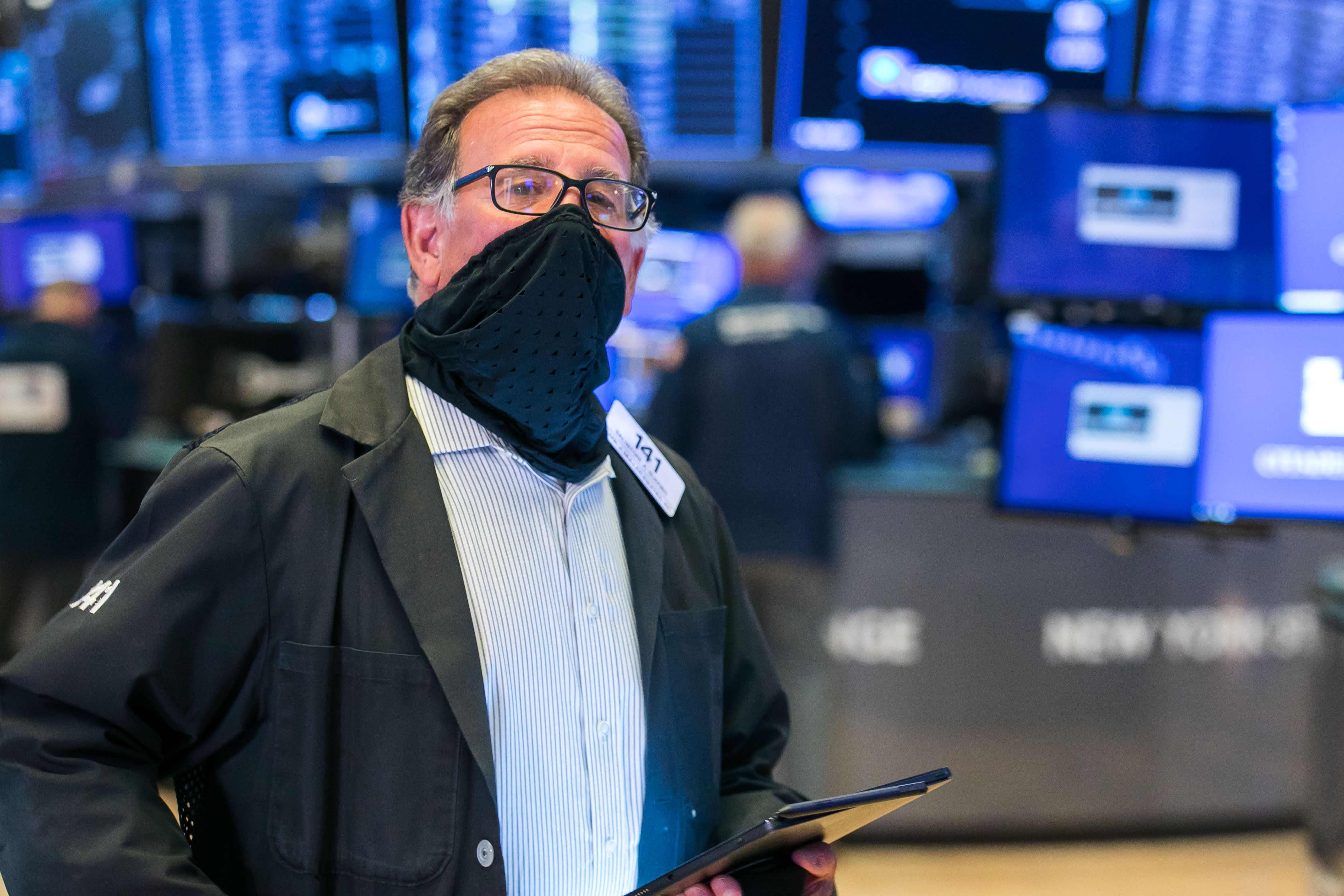Monday’s aggressive stock market rally came despite the fears of one Wall Street firm that investors still aren’t appreciating how quickly the Federal Reserve could start raising rates.
After getting hammered in the final three trading days last week, Wall Street came roaring back with a move that sent the Dow Jones Industrial Average up more than 1.5%.
“The market is getting back to its comfortable mode,” Mohamed El-Erian, the chief economic advisor at Allianz, told CNBC’s “Squawk Box.” “Growth is strong. They still believe inflation is transitory. They believe the Fed is going to be relatively slow in tapering [monthly asset purchases], and that’s why you’re seeing” stocks higher.
That sanguine view of Fed policy is a mistake, according to Bank of America credit strategist Hans Mikkelsen.
Last week’s Federal Open Market Committee concluded with officials indicating they now see two rate increases coming as soon as 2023, more quickly than the market had been anticipating.
But Mikkelsen’s view is that tighter monetary policy may come even sooner.
“Expect the Fed to soon begin tapering its [quantitative easing] purchases, and to start hiking interest rates earlier than expected – and most importantly much faster than currently priced in markets,” he said in a note to clients.
The bank’s analysis noted the committee was only “two dots,” or the projections of two members of the 18-person committee, away from pulling the first rate increase into 2022. The panel split evenly on whether rates should move next year, while eight members saw as many as three hikes for 2023.
Taken collectively, the members’ sentiment about where policy should go offered a significant deviation from what has been a historically easy Fed.
Mikkelsen said the credit market, which sent rates sharply lower despite the hawkish Fed, is misjudging which way the central bank is heading. From the market’s perspective, it is seeing just a 41% chance that the Fed hikes rates by July 2022, according to the CME’s FedWatch tracker.
“The key mispricing in the rates market, as our rates strategists continue to point out, is not the taper, not the timing of the first rate hike, but the pace of hikes from that point on, which is way too shallow compared with normal hiking cycles in the past,” he wrote.
Mikkelsen pointed out that the Fed in effect has already begun tapering with its moves to unwind the small portfolio of corporate bonds it purchased during the Covid-19 pandemic. That move, “which was 100% unexpected as the Fed has a poor track record selling assets – was a signal the Fed increasingly feels emboldened to exit their super-easy monetary policy stance, even if that means defying market expectations.”
Changes in the Fed
For their part, Fed officials are indicating the landscape indeed is shifting, as reflected in the dot-plot projections released Wednesday.
St. Louis Fed President James Bullard jolted the market Friday when he told CNBC he was one of the FOMC members who thinks a rate hike in 2022 would be appropriate. Bullard is not a voter this year but will be one next year.
But Dallas Fed President Robert Kaplan said Monday he is more focused on reducing the pace of bond purchases – tapering – for now, and sees the rates question as one to be answered another day.
“I would rather see us act sooner rather than later on asset purchases, then we’ll make a decision down the road in 2022 and beyond about the additional steps that are necessary,” said Kaplan, who appeared jointly with Bullard for a discussion presented by the Official Monetary and Financial Institutions Forum. “But I think the issue on the table today and in the near term is the timing and adjustment of these purchases.”
Both officials noted the progress the economy has made and see reason that the inflation that has arisen in recent months may be a little stickier than the Fed had anticipated.
“The supply-demand imbalances, some of them we think will resolve themselves in the next six to 12 months,” Kaplan said. “But again some of them we think are likely to be more persistent, driven by a number of structural changes in the economy.”
For example, he cited changes in the energy industry – a key component of Kaplan’s district – toward sustainable power as contributing to longer-lasting inflationary pressures.
Bullard spoke of the evolving labor market as an important consideration for future Fed policy.
“We have to be ready for the idea that there’s upside risks to inflation,” he said. “Certainly, the anecdotal evidence is overwhelming that this is a very tight labor market.”
If those inflationary pressures are hotter than Fed officials think, it would force them into tightening policy faster than they would like. That would hit the stock market and broader economy, both of which are dependent on lower rates.
A tight Fed would drive up borrowing costs for a government that has been on a spending binge over the past year and wants to do even more with infrastructure.
“Right now, inflation is transitory. But if you overlay that with significant further stimulus, then you run the risk of making something transitory permanent,” Natixis chief economist for the Americas Joe LaVorgna said. “So, you’re in a really tricky spot. I think the Fed’s best approach is to say less.”
Become a smarter investor with CNBC Pro.
Get stock picks, analyst calls, exclusive interviews and access to CNBC TV.
Sign up to start a free trial today.
